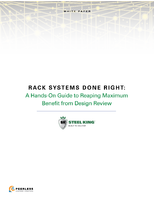What are Biomaterials for the Plastic Injection Molding Industry?
Crescent Industries helps our customers with solutions in for using biomaterials in the Injection Molding Industry. "Going Green", is a growing interest worldwide with the population expanding and natural resources diminishing. In order to sustain the same standard of living for our children to enjoy, preserving these resources is fundamental. Interest in biomaterials in the plastic injection molding industry has been increasing due to the worldwide interest in renewable resources, growing concern regarding greenhouse gas emissions, a new emphasis on waste management, as well as soaring oil prices.
Biopolymers are an organic strain of polymer that is produced naturally by living things, however there are a few different classifications of biopolymers. The plastic injection molding industry is starting to use these to form more sustainable materials for mass production.
Parts and goods that are made out of these bioplastic materials can be produced from natural, renewable biopolymers, reducing the strain on oil supplies and then at the end of the part's life it can be composted or disposed of in a manner that it will degraded back into water and carbon dioxide, reducing waste produced from commercial goods. With this in mind it should be noted that an important distinction should be made between strict biopolymers and biodegradable polymers; a biopolymer is biodegradable in large because of its chemical makeup, but a biodegradable polymer can be made of a petroleum base and still be biodegradable to some degree. Therefore biopolymers are classified by how it is constructed or obtained while a biodegradable polymer is classified as such because of its biodegradability, not its structure. [1]
PolyOne breaks it down into three major biodegradable polymer groups in the market: thermoplastic starch based polymers, PLA and PHA.
o Thermoplastic Starch Based Polymers are derived from corn, potatoes, wheat, tapioca, and others.
o PLA (Polylactic acid) is polymerized from lactic acid derived from beets, corn, potatoes and others. Lactic acid is produced through fermentation of sugar feedstocks.
o PHA (Polyhydroxyalkanoate) is produced within a selected strain of bacteria and stored as "fat". The fat can be harvested, purified and utilized to create a family of biopolymers. [2]
If you would like to learn more about these biomaterials and biopolymer molding, here below are links provided by PolyOne(TM) for more detailed information. Crescent Industries would be happy to help you "Go Green" with your next custom injection molded project.
About Crescent Industries:
Crescent Industries is an injection molder producing custom designed high quality plastic components. Our 50,000 square foot manufacturing facility is staffed with associates trained in Scientific Molding principles and certified by RJG & the Global Standards for Plastic Certification.
For more information on our Injection Molding Capabilities www.crescentind.com/crescent_industries_custom_injection_molding.html , call 1-800-411-3844 or email sales@crescentind.com.




